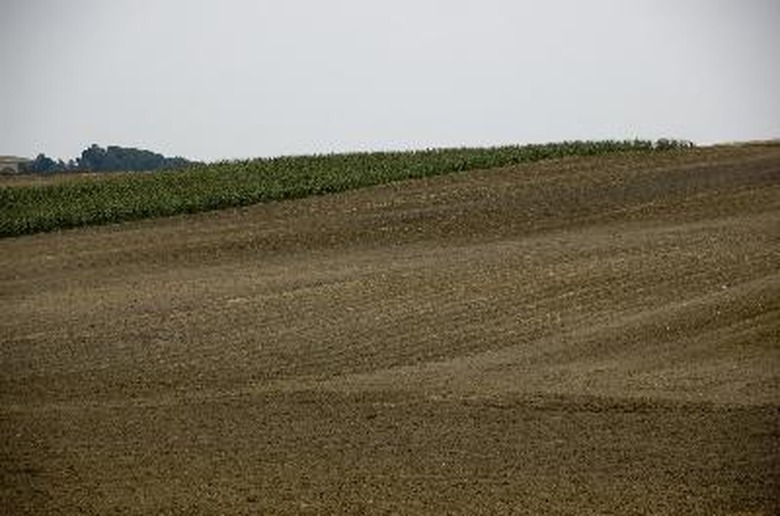How Does Soil Fit Into The Rock Cycle?
The rock cycle is the endless process that turns existing rocks into new rocks. Igneous, metamorphic and sedimentary rocks will turn into the other types as various forces break them down, often rearrange their very atoms to form different minerals, and form new rock from them. Soils, as well as silt, clay and sand, form from the breakdown of surface rocks by weathering. Soils are part of the sedimentary phase of the rock cycle.
How Do Rocks Form?
How Do Rocks Form?
Sediments are produced by the weathering of any type of rock. Sedimentary rocks form when sediments are bound together in a mineral matrix deposited by water. The type of sedimentary rock formed depends on the origin, grain size and mineral content of the sediment as well as the minerals deposited by the groundwater. Sedimentary rocks such as limestone form through precipitation of minerals from bodies of water. Igneous rocks form when rocks melt due to heat and pressure deep within the Earth's crust and form magma, the molten state of rock. The magma will either cool while still at depth, or escape as a volcano or lava flow. However it cools, igneous rocks of various types are the result. Metamorphic rocks form when existing rocks of any type are subjected to temperature and/or pressure sufficient to alter their minerals and structure, but not sufficient to melt them into a magma. Metamorphism can vary from very slight alterations to something very near magma.
How Do Rocks Change?
How Do Rocks Change?
During the rock cycle process, sedimentary rocks can become metamorphic or igneous rocks as they are buried in the planet's crust with younger layers of rock above them. Eventually they can metamorphose under heat and pressure at great depth, or melt to form new magma. Uplifting of rock layers by earth forces can bring rocks near the surface again at any point in the cycle. Igneous and metamorphic rocks can weather to form sediments that later become sedimentary rocks. Igneous rocks can metamorphose when subjected again to heat and pressure. Metamorphic rocks can metamorphose in repeat episodes or melt into magma, which later cools to form igneous rocks.
How Does Soil Form?
How Does Soil Form?
In the weathering process, rocks of any type will be broken down by wind, water and alternating freezing and thawing to form gravel, sand, silt and clay. Surface rocks are reduced to ever-smaller size. The resulting sediments are the basis for the eventual formation of soil. Some soils are based on a single sediment type, while others contain a mixture of sediment types. As they develop, soils incorporate organic materials from the surrounding plants and animals. These organic-rich mixtures form fertile soil that is good for growing crops, plants and grasses.
What Does Soil Become?
What Does Soil Become?
Over time, soil layers are buried by new layers of sediment and eventually lithify to form sedimentary rock. The rock cycle continues as the sedimentary rocks are again brought in contact with the surface to weather and transform into new soil and other sedimentary rocks, or continue to be covered with newer sediments until they are buried deep in the crust where they may transform into new metamorphic or igneous rocks. The rock cycle is far slower in some places than it is in others, but it will not end as long as Earth is geologically active and has an atmosphere.
References
Cite This Article
MLA
Barnhart, Tracy. "How Does Soil Fit Into The Rock Cycle?" sciencing.com, https://www.sciencing.com/how-does-soil-fit-into-the-rock-cycle-13406940/. 22 November 2019.
APA
Barnhart, Tracy. (2019, November 22). How Does Soil Fit Into The Rock Cycle?. sciencing.com. Retrieved from https://www.sciencing.com/how-does-soil-fit-into-the-rock-cycle-13406940/
Chicago
Barnhart, Tracy. How Does Soil Fit Into The Rock Cycle? last modified March 24, 2022. https://www.sciencing.com/how-does-soil-fit-into-the-rock-cycle-13406940/
